Abstract
Breast rejection is a common cause of breast-feeding failure. We describe 51 mother-infant pairs who visited the Hospital for Sick Children breast-feeding clinic because the baby refused to take the breast. Management was successful in 21 (40%), partially successful in 11 cases (22%), and unsuccessful in 16 (31%). (Three mothers were lost to follow up.) We believe that the early introduction of bottles results in the baby's developing an ineffective suckle, which then causes frustration when the baby tries to breast-feed. Good management of breast-feeding in the newborn period involves avoiding bottles and teaching the mother proper positioning and latching, as well as signs that indicate whether her baby is getting adequate milk. A method of giving supplemental fluids without direct bottle-feeding is described.
Keywords: breast-feeding, breast rejection, family medicine, gynecology, lactation aid, pediatrics
Full text
PDF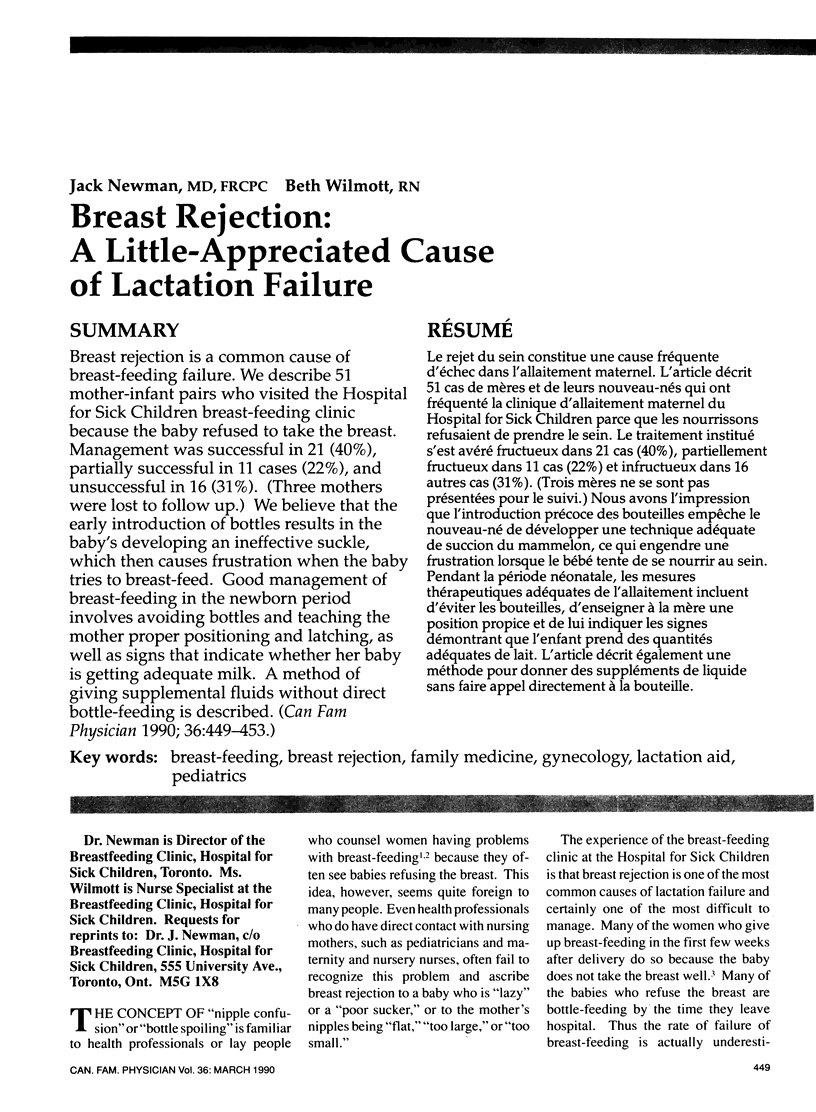
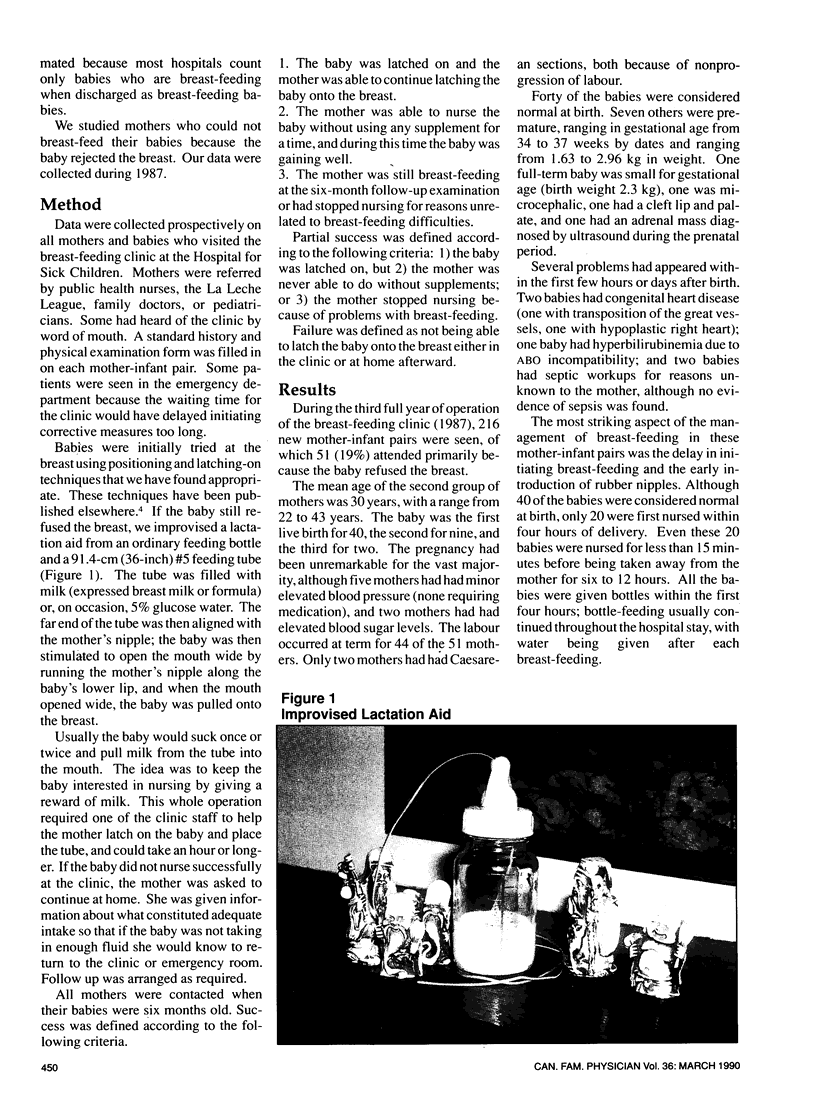
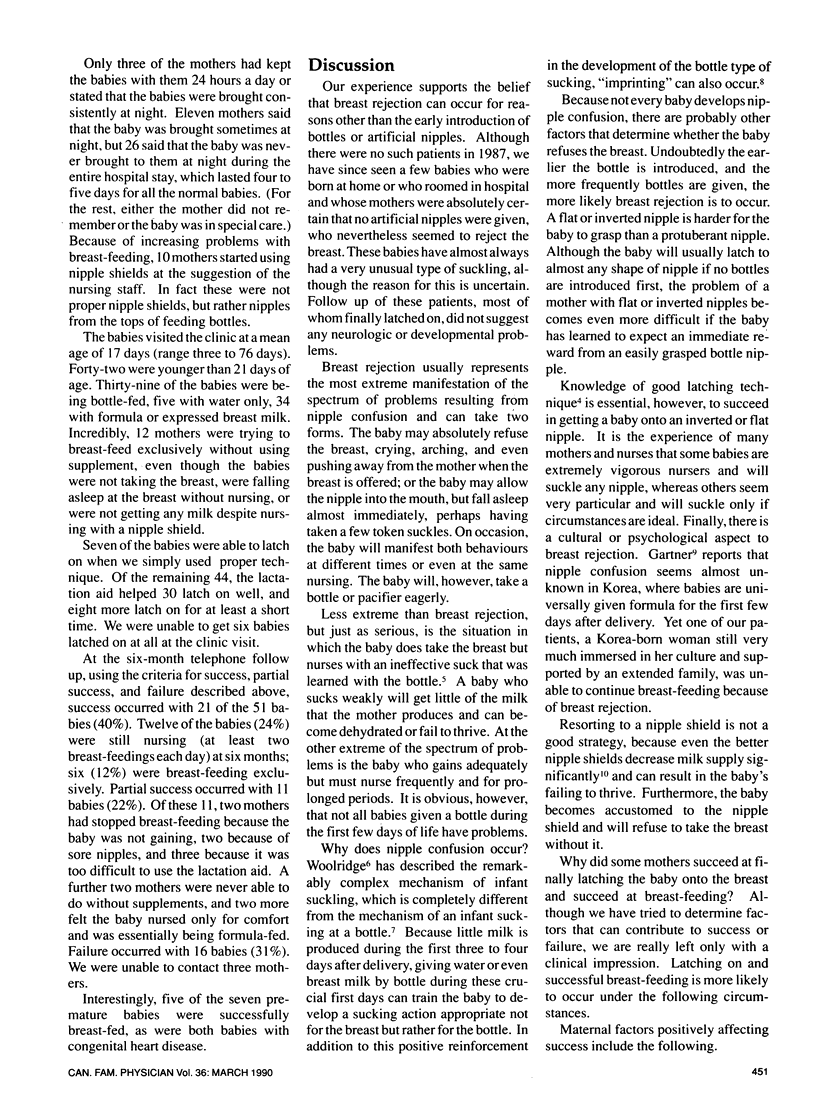
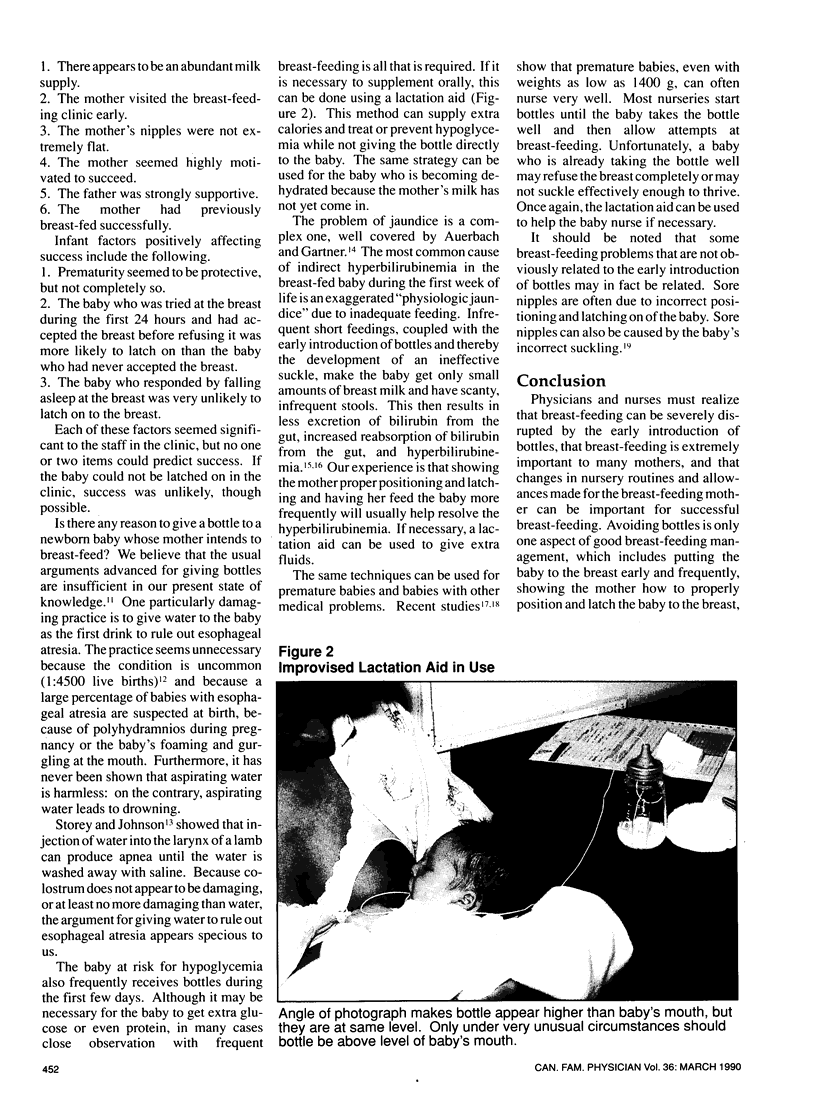
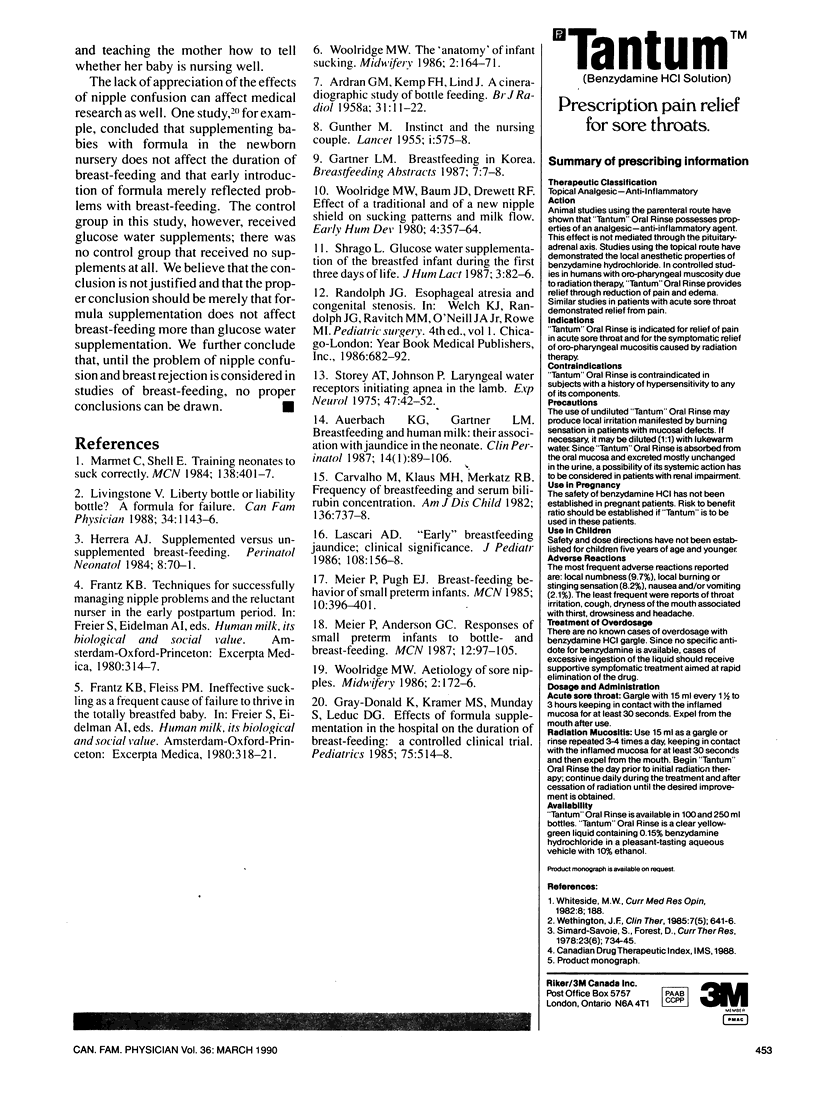
Images in this article
Selected References
These references are in PubMed. This may not be the complete list of references from this article.
- ARDRAN G. M., KEMP F. H., LIND J. A cineradiographic study of bottle feeding. Br J Radiol. 1958 Jan;31(361):11–22. doi: 10.1259/0007-1285-31-361-11. [DOI] [PubMed] [Google Scholar]
- Auerbach K. G., Gartner L. M. Breastfeeding and human milk: their association with jaundice in the neonate. Clin Perinatol. 1987 Mar;14(1):89–107. [PubMed] [Google Scholar]
- De Carvalho M., Klaus M. H., Merkatz R. B. Frequency of breast-feeding and serum bilirubin concentration. Am J Dis Child. 1982 Aug;136(8):737–738. doi: 10.1001/archpedi.1982.03970440081024. [DOI] [PubMed] [Google Scholar]
- GUNTHER M. Instinct and the nursing couple. Lancet. 1955 Mar 19;268(6864):575–578. doi: 10.1016/s0140-6736(55)91631-7. [DOI] [PubMed] [Google Scholar]
- Gray-Donald K., Kramer M. S., Munday S., Leduc D. G. Effect of formula supplementation in the hospital on the duration of breast-feeding: a controlled clinical trial. Pediatrics. 1985 Mar;75(3):514–518. [PubMed] [Google Scholar]
- Lascari A. D. "Early" breast-feeding jaundice: clinical significance. J Pediatr. 1986 Jan;108(1):156–158. doi: 10.1016/s0022-3476(86)80796-x. [DOI] [PubMed] [Google Scholar]
- Marmet C., Shell E. Training neonates to suck correctly. MCN Am J Matern Child Nurs. 1984 Nov-Dec;9(6):401–407. doi: 10.1097/00005721-198411000-00009. [DOI] [PubMed] [Google Scholar]
- Meier P., Anderson G. C. Responses of small preterm infants to bottle- and breast-feeding. MCN Am J Matern Child Nurs. 1987 Mar-Apr;12(2):97–105. doi: 10.1097/00005721-198703000-00006. [DOI] [PubMed] [Google Scholar]
- Meier P., Pugh E. J. Breast-feeding behavior of small preterm infants. MCN Am J Matern Child Nurs. 1985 Nov-Dec;10(6):396–401. doi: 10.1097/00005721-198511000-00009. [DOI] [PubMed] [Google Scholar]
- Woolridge M. W. Aetiology of sore nipples. Midwifery. 1986 Dec;2(4):172–176. doi: 10.1016/s0266-6138(86)80042-0. [DOI] [PubMed] [Google Scholar]
- Woolridge M. W., Baum J. D., Drewett R. F. Effect of a traditional and of a new nipple shield on sucking patterns and milk flow. Early Hum Dev. 1980 Dec;4(4):357–364. doi: 10.1016/0378-3782(80)90040-7. [DOI] [PubMed] [Google Scholar]
- Woolridge M. W. The 'anatomy' of infant sucking. Midwifery. 1986 Dec;2(4):164–171. doi: 10.1016/s0266-6138(86)80041-9. [DOI] [PubMed] [Google Scholar]




